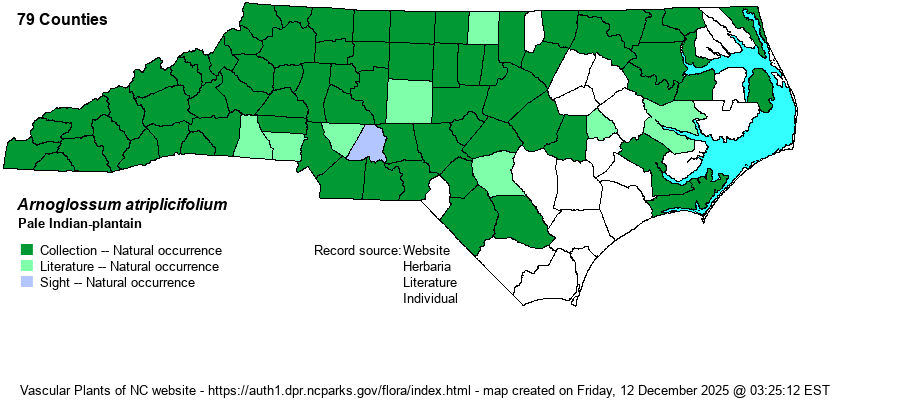| Author | (L.) H.E. Robinson | |
| Distribution | Mountains, Piedmont, and northern Coastal Plain; scarce in the Sandhills and the central-southern Coastal Plain.
NY to MN and NE, south to northern FL and LA. | |
| Abundance | Common in the Mountains; fairly common to common in the Piedmont; fairly common in the northern Coastal Plain, but rare to uncommon in most of the central and southern Coastal Plain. | |
| Habitat | A diversity of mesic to moist or dry forests and woodlands, montane slopes, meadows, and clearings. | |
| Phenology | Flowering and fruiting June-September. In the field, one may find non-flowering basal leaves by themselves, presumably immature plants. | |
| Identification | This glabrous perennial grows to 3-6 or even to 9 feet tall. Leaves are narrowly triangular on the stem, broadly so or ovate basally, all with deeply sinuate margins and glaucous undersides. The inflorescence is open and branched, with heads in all directions. Each head is glaucous, and contains only 5 disk flowers -- white to cream in color. | |
| Taxonomic Comments | Older texts treated it as Cacalia atriplicifolia.
| |
| Other Common Name(s) | None | |
| State Rank | S5 | |
| Global Rank | G4G5 [G5] | |
| State Status | | |
| US Status | | |
| USACE-agcp | | |
| USACE-emp | | |

